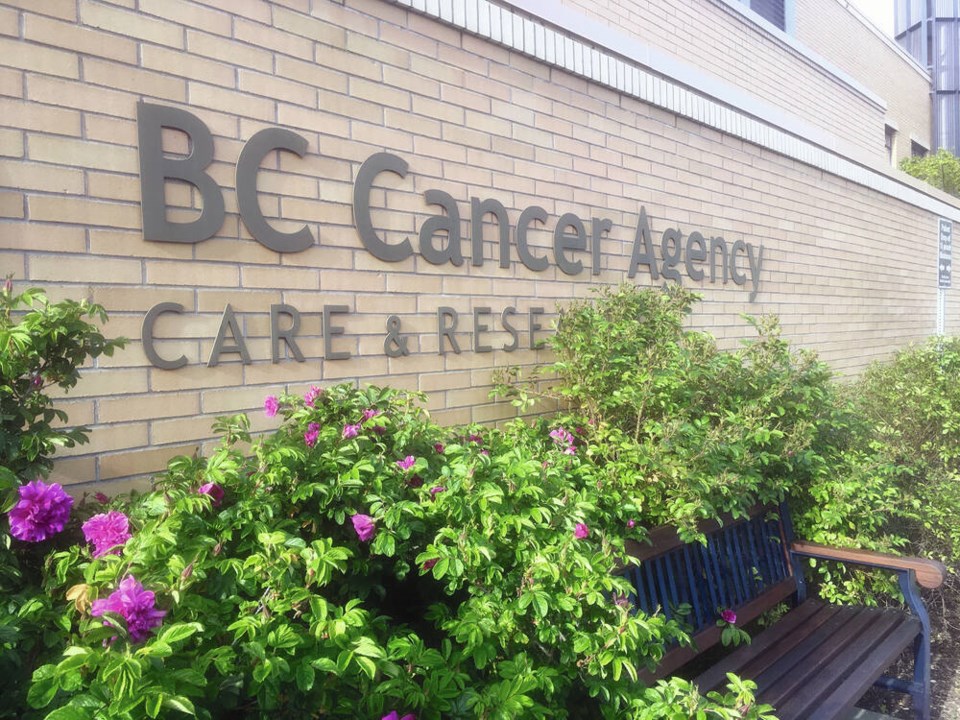Announcement about cancer care not a big deal
With abundant fanfare, the government announced new cancer care centres in Nanaimo and Kamloops, and $400 million over 10 years for improving cancer research and care.
This appears to be a very positive attempt to bring cancer care standards up to internationally acceptable standards. In the same week, the government, by having to send patients to America for radiotherapy, admitted its current abysmal failure to provide adequate cancer care.
This was not a sudden explosion of substandard therapy but a gradual and predictable decline in cancer care (and almost all areas of medical care) in B.C.
Countless lives have been sacrificed on the altar of government inertia. The loss of lives will continue for several more years awaiting final implementation of these measures. Note that the two new centres have only passed the concept plan approval process.
Most people will be impressed by these promises, which is exactly what the government intends. But let us not forget that a cancer centre for Kamloops was announced in the 1990s. Nothing happened.
It was mentioned again in the 2020 election campaign. Only now is it seeing the light of day, but we’ll still have to wait for several more years for completion.
Broken promises feature prominently in this government’s agenda, as witnessed by the new medical school announcement which festered for years, adding to our family practitioner crisis.
To be fair, meaningless promises are not just an NDP phenomena. The last Liberal government openly abandoned its election promise that all B.C. residents would have a family doctor.
$400 million over 10 years seems huge. But is it? Health care is astronomically expensive. This new yearly expense accounts for only 1.4 per cent of B.C.’s annual health budget of nearly $29 billion. Cancer care is one of the most costly of all diseases.
About 30,000 B.C. residents get a diagnosis of cancer each year, and 10,000 cancer patients die each year.
The average cost (per patient) of care for the last year of cancer patients lives is around $50,000. Total cost is $500 million.
The cost of diagnosis and intermediate phases are around $30,000 per patient. So total cancer care cost per year for B.C. is more than $1 billion.
The promised $40 million per year is a four-per-cent increase in the cancer care annual budget. This barely keeps up with inflation.
So, as with many government announcements supposedly raising our health care from the abysmal depths it has fostered, look closely in order to remove the veil of ignorance that the government presumes we all wear.
Dr. Adrian Fine M.D.
Retired medical specialist
Victoria
Mismanagement, or failure to act?
A new cancer centre is welcome news for residents of central and northern 91‘≠¥¥ Island, but the idea of sending 4,800 breast and prostate cancer patients to Bellingham, Washington for radiation therapy over the next two years is a colossal management failure in planning.
Even when the new Nanaimo cancer centre begins delivering radiation treatment for 1,600 patients each year, it appears we will continue to have to rely on outsourcing treatment based on these numbers.
I have often wondered why our health system does not utilize MRIs, CT scanners and linear accelerators for longer hours in the day when needed to provide timely treatment.
Instead of spending more than three times for treatment ($3,854 vs $12,277) plus expenses to deliver radiation therapy in the United States, why not operate these facilities for an extra hour a day or as needed until adequate facilities are constructed.
The additional wage cost at overtime rates would still provide substantial savings and be more convenient and less costly for patients.
Surely the Health Ministry tracks figures of the number of procedures and is capable of predicting future needs based on trends and demographics to determine the requirement for facilities, equipment and medical staff.
It would appear that failure to plan or failure to act on the recommendations of managers of our health system is the problem. As a voter, I would be interested in knowing where the problem rests.
Wayne Cox
Saanichton
SEND US YOUR LETTERS
• Email letters to: [email protected]
• Mail: Letters to the editor, Times 91‘≠¥¥, 201-655 Tyee Rd.,
Victoria, B.C. V9A 6X5
• Submissions should be no more than 250 words; subject to editing for length and clarity. Provide your contact information; it will not be published. Avoid sending your letter as an email attachment.



